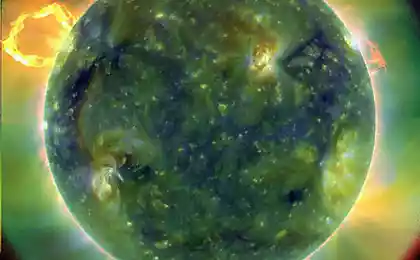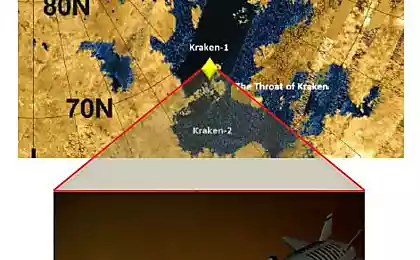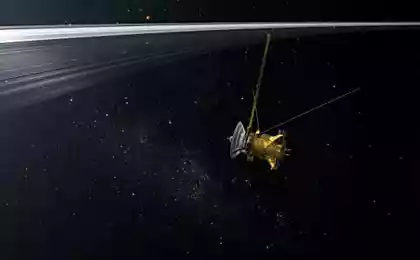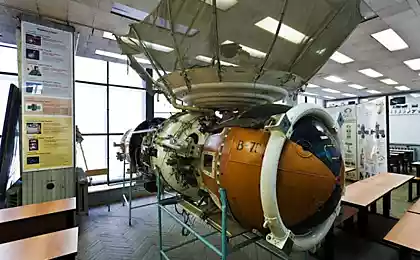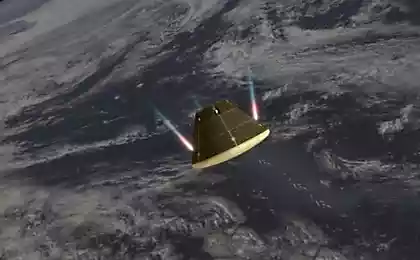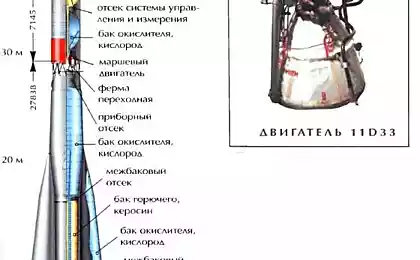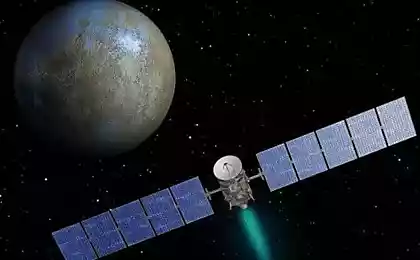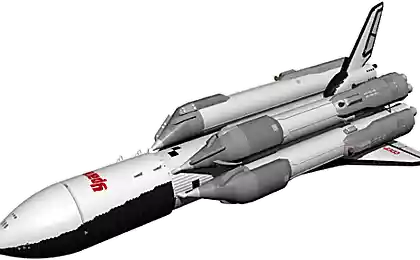203
Five Unexpected Discoveries of Huygens
The Huygens spacecraft, a probe created by the European Space Agency and named after the seventeenth-century Dutch astronomer Christian Huygens, landed on the surface of Titan, Saturn’s largest moon, on January 14, 2005.
The parachute descent in the atmosphere took 2 hours 28 minutes and ended with the first ever soft landing made in the outer solar system. During the descent, Huygens measured the temperature, density, chemical and isotopic composition and other parameters of the satellite’s atmosphere. We decided to talk about five unexpected discoveries of Huygens.
Potentially habitable moon Titan has a thick nitrogen atmosphere, which for a long time did not allow to see the surface. The lower atmosphere of Titan, as on Earth, is divided into the troposphere and stratosphere. In the troposphere, the temperature drops with altitude.
An extensive tropopause extends to an altitude of 50 km, where the temperature remains almost constant. And then the temperature starts to rise. Such temperature inversions prevent the development of vertical air movements. They usually occur due to the combined action of two factors - heating the air from below the surface and heating from above due to the absorption of solar radiation. On Titan, the temperature is steadily rising to at least 150 km.
However, at altitudes of more than 500 km, Huygens unexpectedly detected a series of temperature inversions, each of which determines a separate layer of the atmosphere. Their origin is still unclear. Titan’s atmosphere, like Earth’s, is nitrogen. The second most important gas is methane. It can be compared to water vapor in the Earth’s atmosphere. In addition, complex organic compounds formed during the decay of methane under the influence of solar ultraviolet radiation were found in Titan's atmosphere. This gives scientists a reason to compare the atmosphere of the largest satellite of Saturn with the primary atmosphere of the Earth.
Presumably, near the surface of Titan there is a strong turbulence of the atmosphere: the probe suddenly strongly swung before landing. However, it is not yet possible to confirm this.
This probe allowed to determine the nature of the surface of Titan. It was neither hard nor too soft: it was not ice, nor a thick layer of settled aerosol. According to its mechanical properties, the surface resembles soft clay, slightly rammed snow or sand, covered with a thin film of hydrocarbon substance up to several centimeters thick.
The last 90 m of Huygens flight showed that the surface is relatively flat, but not completely smooth. After landing, the device recorded signs of methane evaporation. This suggests that the soil may have been saturated with methane. For example, it could be the coast of the methane sea or river. It also found asymmetry in Titan’s northern and southern hemispheres. In the northern hemisphere, the area of liquid surfaces is 20% larger than in the southern hemisphere. This could be due to either topographical asymmetry or seasonal changes on Titan.
Interpretation of data from the probe “Huygens” told about the weather on Titan: the climate of the planet is similar to the Earth’s climate in prehistoric times. There are strong storms on the planet. When the concentration of methane in the middle layers of the atmosphere reaches 80%, upward flows begin to form at a speed of about 70 km per hour. As a result of this process, thick cloudiness occurs in the atmosphere of the satellite. Precipitation on Titan can reach up to three centners per square meter of surface per hour, and raindrops from liquefied hydrocarbons reach a size of up to one cm.
The space probe made it possible to study titanium clouds: their upper part consists of methane ice, and the lower part consists of liquid methane and nitrogen. The temperature on the planet is 179 degrees below zero, and methane fog almost constantly creeps away.
Methane precipitation feeds numerous streams, lakes and springs found in images taken by Huygens on Titan. Ponds filled with methane are located in the northern latitudes of the planet. This is the first time that water bodies have been discovered outside of Earth. Their sizes vary from a kilometer to hundreds of kilometers.
One of them, informally called the Kraken Sea, is larger than the Caspian Sea. The images show that the surface of the “land” is cut through numerous winding channels, and in some images even traces of rivers out of banks, traces of “floods” are visible. In addition, low-frequency radio signals recorded by Huygens may indicate the presence of an underground ocean consisting of liquid water on Saturn’s largest moon.
Kraken Sea.
Because of the atmosphere, the possibility of life on Titan remains open. Titan is similar in many ways to the early Earth 4.6 billion years ago, so there are many prerequisites for the emergence of life on the planet. Under the influence of light, methane is converted into ethane, acetylene, ethylene, in conjunction with nitrogen - into salts of cyanide acid, which are the building blocks for amino acids. Analysis of the data obtained with the help of Huygens allows us to hypothesize the presence of primitive species of biological life on Titan.
According to them, “life forms breathe the atmosphere of this largest moon of Saturn and consume the chemical compounds on the surface of Titan, thereby obtaining the necessary energy.” However, as scientists emphasize, data on the dynamics of hydrogen and acetylene in the atmosphere of Titan are only signs of the existence of life, not its confirmation.
Source: planetologia.ru
Source: /users/1080
The preservation and saving of natural resources in everyday life, without attachments!
Unique Soviet cars that we never saw
